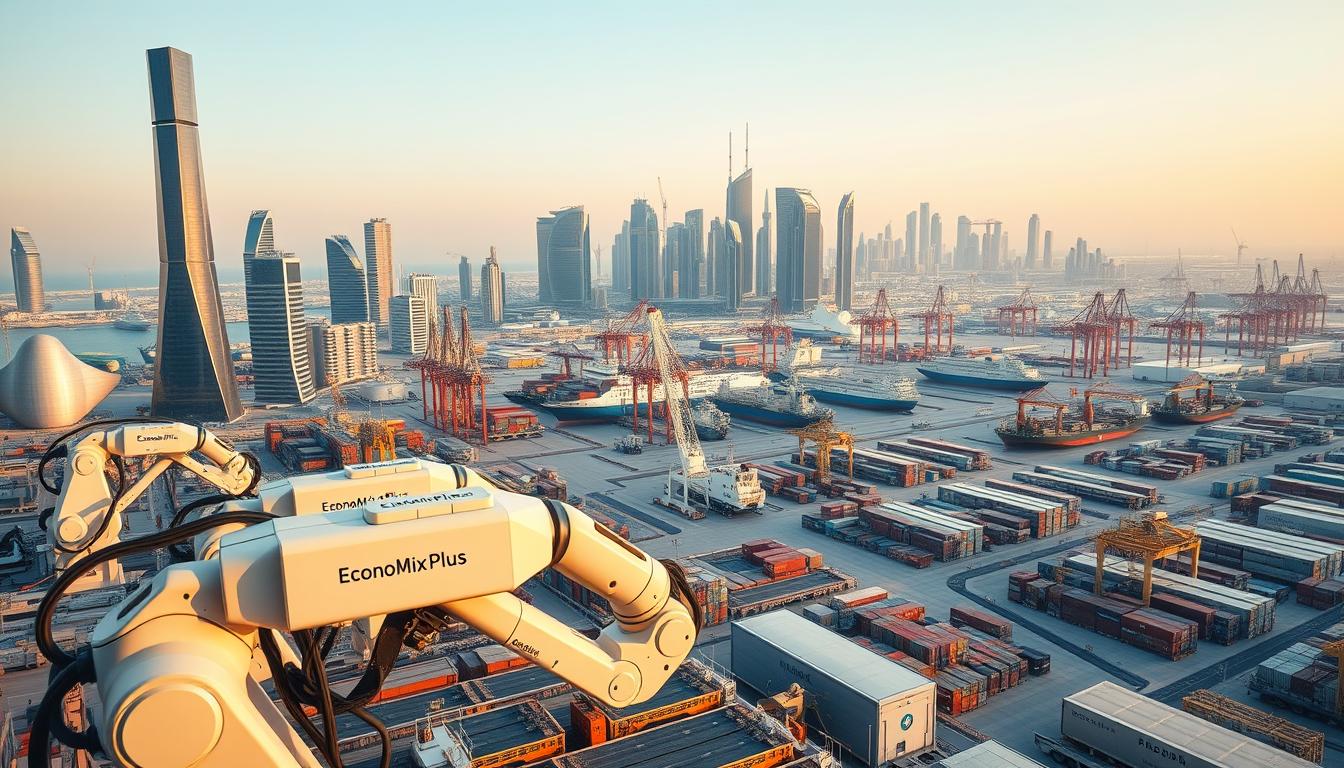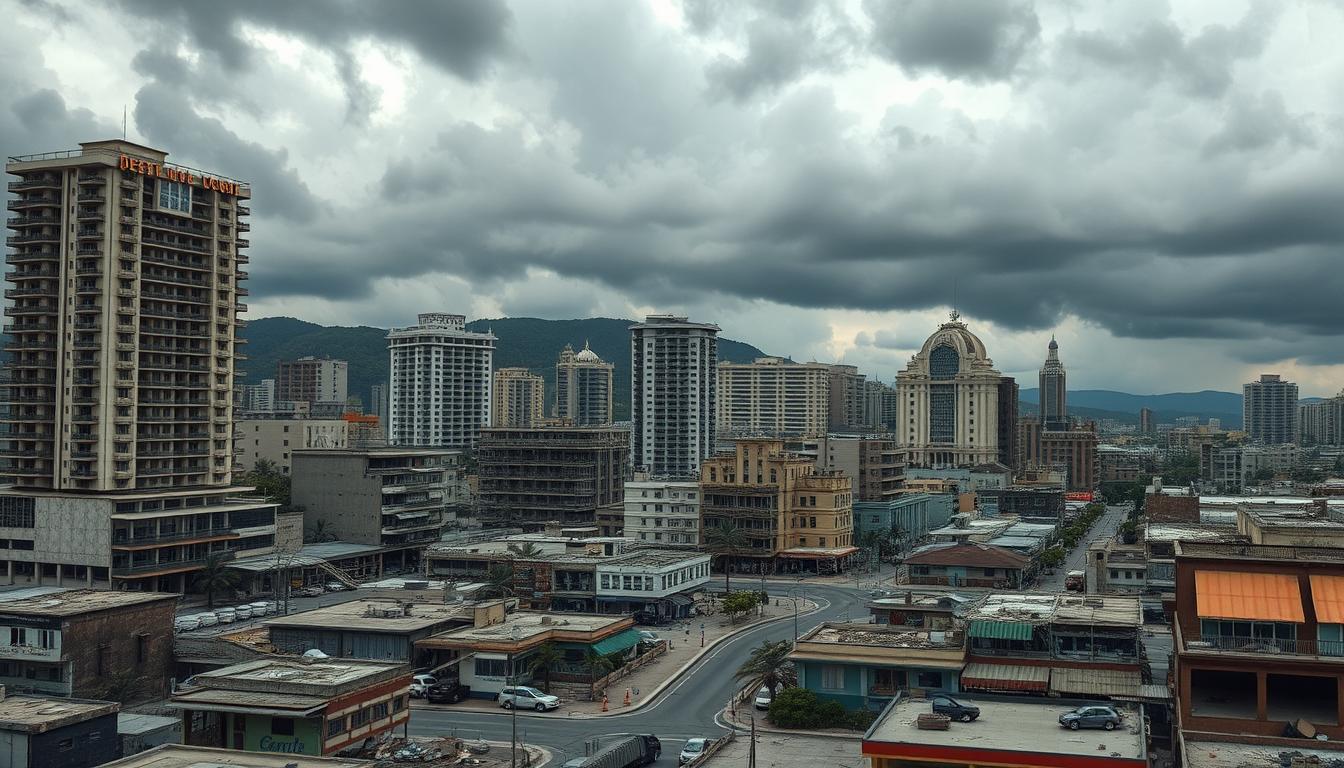In 1960, Egypt’s industrial sector grew by 14% annually—a rate surpassing Japan’s postwar boom. This surge reflected a bold post-colonial vision: nations across the Middle East vowed to build economies free from foreign control. From factories to tech hubs, leaders prioritized self-sufficiency, driven by anti-colonial fervor and ambitious modernization plans. This journey represents a critical step in the life of these nations, serving as a guide for future industrial strategies and inspiring new ideas in the region’s economic landscape.
Inspired by Gamal Abdel Nasser’s policies, countries aimed to produce everything from textiles to advanced machinery. “From a needle to a rocket” became a rallying cry, symbolizing the desire for full industrial autonomy. Decades later, progress remains uneven. While some states thrive in niche sectors like petrochemicals, others struggle with outdated infrastructure.
Technology transfer and policy shifts reshaped these efforts. Early state-led models gave way to public-private partnerships, adapting to global market demands. Data shows industrial contributions to GDP in the region now range from 5% to 35%, highlighting stark contrasts.
Key Takeaways
- Post-colonial industrial drives prioritized economic independence across the Middle East.
- Egypt’s Nasserist policies influenced regional strategies for decades.
- Technology adoption remains critical for modern manufacturing growth.
- Policy changes shifted focus from state control to mixed economic models.
- Infrastructure gaps and global competition challenge current progress.
Historical Foundations and the Post-Colonial Industrial Ambition
Algeria’s El Hadjar steel complex opened in 1964, producing 400,000 tons annually—a defiant answer to colonial-era resource extraction. Across North Africa and the Levant, newly independent governments viewed industrialization as liberation. Colonial powers had built railways and ports to export raw materials, leaving limited access to advanced manufacturing capabilities. Leaders sought to reverse this imbalance through state-driven projects.
Legacy of Colonialism and Early Economic Visions
French rule in Algeria prioritized wine exports over local food production, while British-controlled Egypt funneled cotton profits overseas. Post-independence planners focused on heavy industries to break dependency. Egypt’s Helwan Iron and Steel Works became a flagship project, employing 12,000 people by 1970. Algeria partnered with Soviet experts to build phosphate processing companies, aiming to control mineral wealth.
Anti-Colonial Sentiments Shaping Industrial Policies
“Factories are our weapons,” declared Algerian President Houari Boumédiène, capturing the era’s ethos. Governments nationalized foreign-owned assets, from oil fields to textile mills. Egypt banned private steel imports to protect domestic work. However, overambitious targets often clashed with technical gaps. A 1972 World Bank report noted Algeria’s $1.2 billion industrial budget yielded only 63% capacity utilization.
| Country | Key Project | Output (1975) | Challenge |
|---|---|---|---|
| Egypt | Helwan Steel | 1.5M tons | Energy shortages |
| Algeria | Annaba Phosphate | 850K tons | Skilled labor deficit |
| Syria | Homs Refinery | 110K bpd | Foreign currency gaps |
These efforts reshaped economies but faced systemic hurdles. Centralized planning struggled to adapt to global shifts, while tourism and agriculture competed for funding. By the 1980s, many state-run companies required subsidies, revealing the complexity of turning political will into sustainable work models.
Industrial Strategy Shifts in the Arab World
By 1978, Saudi Arabia’s Basic Industries Corporation began producing 5 million tons of steel annually – a pivot from oil dependency. This marked a regional pattern of strategic reinvention. Post-independence governments adopted varied blueprints to modernize production, blending ideology with practical needs.
Government-Led Initiatives and Bureaucratic Challenges
Egypt’s 1965 five-year plan allocated 37% of funds to state-run factories. “Central control ensures national priorities,” argued Industry Minister Aziz Sedky. Yet rigid oversight often backfired. By 1982, Cairo’s Misr Iron Works operated at 58% capacity due to approval delays for foreign machine parts.
Impact of Soviet-Inspired Models in Early Development
Algeria’s 1971-1979 plan mirrored Moscow’s command economy. Soviet engineers helped build the Annaba steel complex, designed to process 2 million tons yearly. However, maintenance issues caused 120-day shutdowns in 1980. Technology transfers faltered when local teams lacked advanced training.
| Country | Strategy | Peak Output | Learning Curve |
|---|---|---|---|
| Egypt | Import substitution | 4.2M tons steel (1985) | Slow tech adoption |
| Algeria | Soviet partnerships | 1.8M tons phosphate (1979) | Skills mismatch |
| Saudi Arabia | Oil revenue reinvestment | $28B industrial GDP (1991) | Private sector integration |
Lessons from Egypt’s and Algeria’s Approaches
Egypt’s Helwan complex shows how technology gaps derail progress. Despite $900 million investments by 1975, German-made smelters sat idle for months, highlighting the need for updated news on industrial advancements. Algeria’s state-centric model created 300,000 industrial jobs by 1980 but required $4 billion annual subsidies. Saudi Arabia later avoided these traps through phased privatization starting in 1993.Modern data reveals a pattern: nations balancing state oversight with market flexibility achieved 2.3x faster growth between 2000-2020. The middle east now faces new tests in renewable energy and automation.
Infrastructure, Trade, and the Broader Economic Context
Morocco’s 1983 decision to slash industrial subsidies by 40% exposed a regional dilemma: state-driven models often prioritized political goals over market efficiency. Heavy reliance on centralized funding created rigid systems struggling to adapt to global trade dynamics. A 2023 World Bank study found nations allocating over 60% of industrial budgets to state-owned enterprises achieved 35% lower productivity than mixed-economy peers.
Dependence on State Financing and Central Planning
Egypt’s 1970s industrial policy directed 80% of manufacturing investments through government channels. While this enabled rapid factory construction, rigid pricing mechanisms discouraged innovation. A 1985 IMF report revealed state-controlled firms in Algeria took 18 months longer than private competitors to adopt new technologies.
| Country | State Funding (%) | Industrial Growth Rate | Key Challenge |
|---|---|---|---|
| Egypt | 74% | 2.1% (1990-2000) | Bureaucratic delays |
| Algeria | 68% | 1.8% | Export restrictions |
| UAE | 33% | 5.7% | Skill shortages |
Evolving Role of Non-Industrial Sectors
Tourism now contributes 12% of Egypt’s GDP—triple its 1980 share—while manufacturing stagnates at 16%. “Services have become the safety valve for economies struggling with industrial transition,” notes a 2022 Carnegie Middle East analysis. UAE’s logistics hubs handle 45% of regional trade, compensating for limited factory output.
This shift creates tension. Governments balancing hotel investments with tech parks face criticism for neglecting core industries. Yet data shows diversified economies grew 2.4x faster during 2015-2020 oil slumps. The change reflects today’s reality: no sector thrives in isolation.
Technology Transfer, FDI, and Their Influence on Growth
Foreign expertise and capital have reshaped manufacturing landscapes worldwide. In 2022, the UAE attracted $23 billion in foreign direct investment—triple Egypt’s inflows—demonstrating how policy frameworks drive technological adoption in the country. Nations leveraging global partnerships now dominate sectors from semiconductors to renewable energy, as people today seek innovative technology solutions in various types of industries.
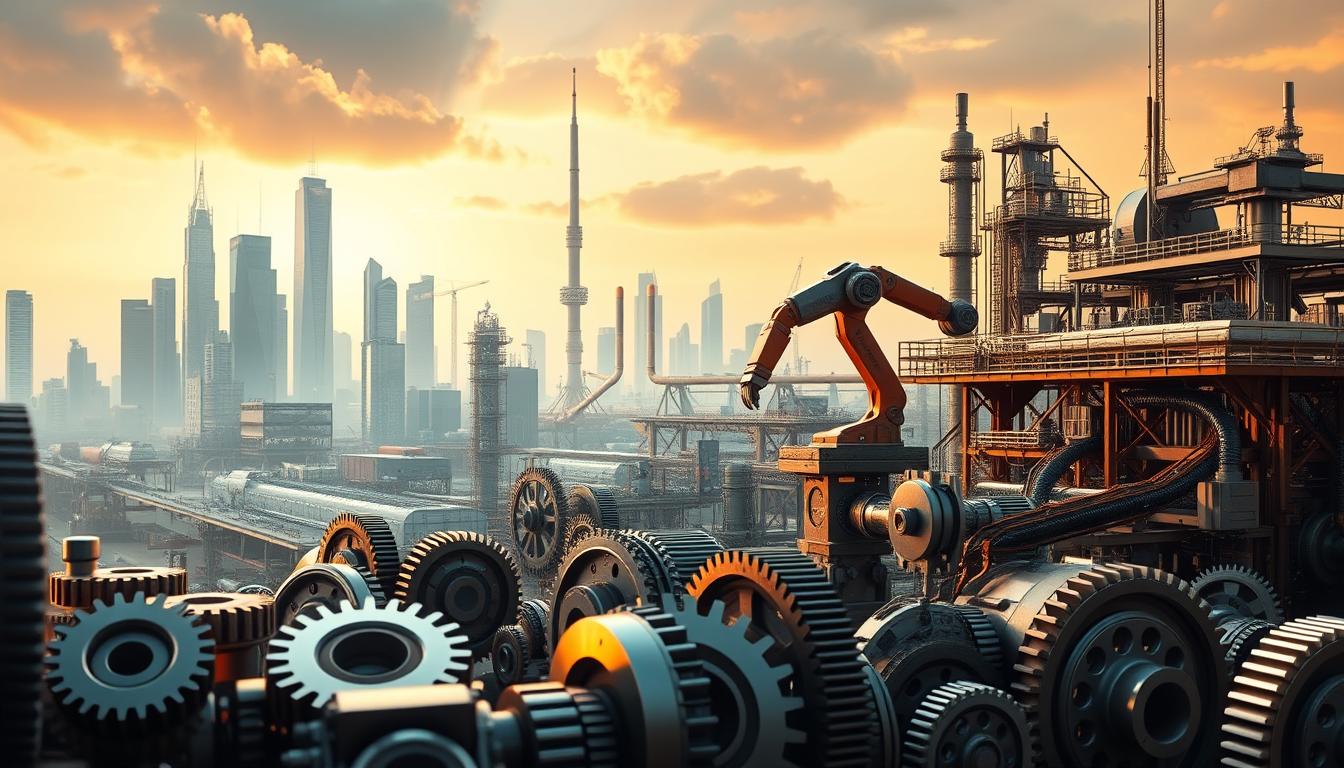
Mechanisms of External Technological Inflows
Licensing agreements enabled South Korea to produce 60% of global memory chips by 1995. Similarly, Saudi Arabia’s 2021 joint venture with Hyundai accelerated electric vehicle battery production. Consultancy firms like McKinsey helped Morocco design step-by-step automation guides for textile factories, boosting output by 34%.
Comparative Analysis of FDI in Arab and Asian Markets
Vietnam secured $38 billion FDI in 2023—double the combined Arab Gulf states’ total. Unlike Asia’s focus on tech startups, 72% of Middle Eastern investments target oil-related sectors. “Climate stability matters less than regulatory predictability,” notes a 2023 World Investment Report.
| Region | FDI/GDP Ratio | Tech Transfer Channels | Key Sector |
|---|---|---|---|
| Gulf States | 1.8% | Joint ventures | Energy |
| East Asia | 4.1% | R&D partnerships | Electronics |
| North Africa | 0.9% | Licensing | Automotive |
Five steps differentiate leaders from laggards:
- Align education systems with industry needs
- Offer tax breaks for climate-tech projects
- Streamline patent approval processes
- Create special economic zones with 10-year incentives
- Mandate technology-sharing in foreign contracts
While Taiwan transformed through semiconductor type innovations, Jordan’s pharmaceutical sector grew 18% annually using similar life science partnerships. The gap highlights untapped potential in strategic FDI targeting.
Learning from Asia’s Industrial Advancements
South Korea’s export revenue jumped from $1 billion to $200 billion between 1970 and 1990—a blueprint for leveraging global markets in technology news. Asian economies transformed through strategic openness, contrasting sharply with protectionist policies elsewhere. This divergence offers critical lessons for regions aiming to modernize manufacturing ecosystems.
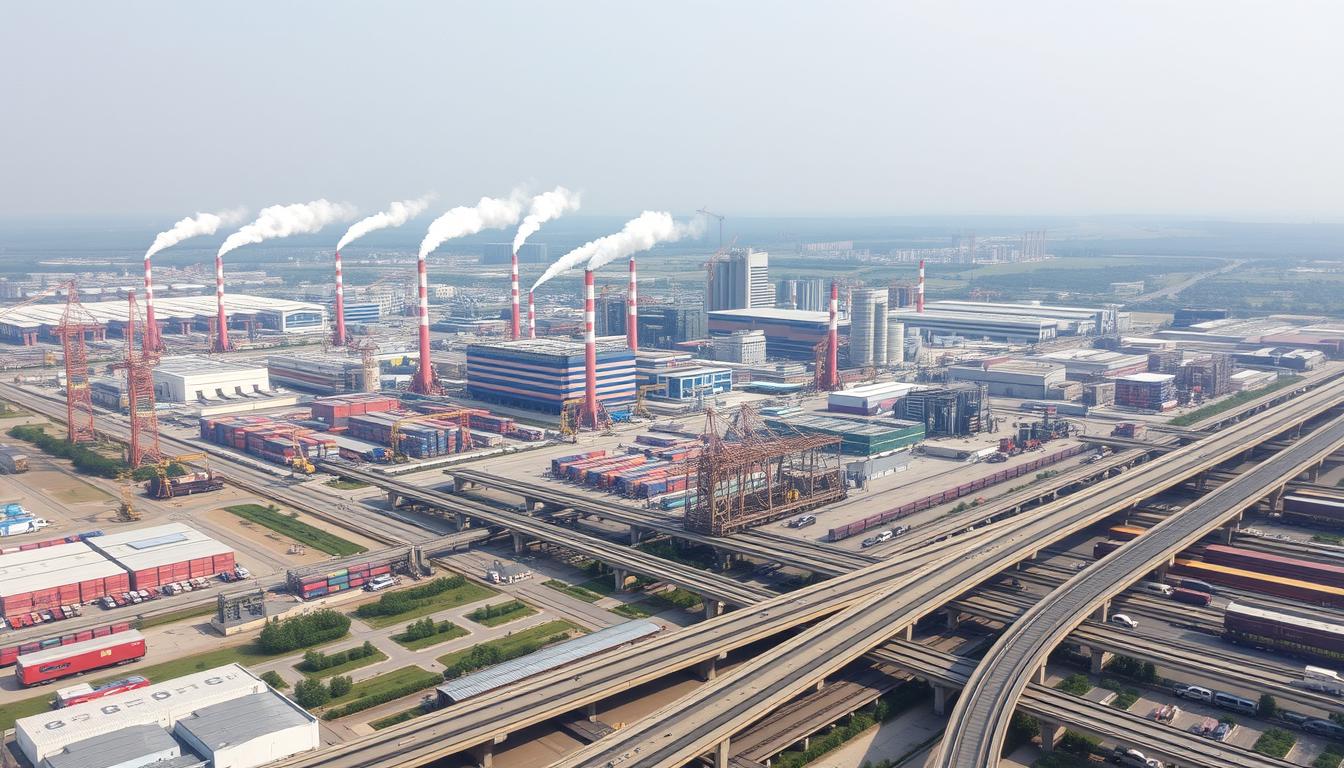
Export-Oriented Policies and Global Market Integration
Japan and Taiwan prioritized competitive exports over domestic consumption. Samsung’s rise from a small trading company to a tech titan mirrors this approach. By 2023, Asia accounted for 52% of global semiconductor exports, driven by tax incentives for investors and streamlined customs processes.
The Role of Skilled Labor and Competence in Innovation
Singapore allocates 3.5% of GDP to technical education—triple the Middle Eastern average. “Talent pipelines determine industrial relevance,” states a 2023 OECD report. South Korea’s 96% tertiary enrollment rate fuels its $130 billion R&D budget, enabling breakthroughs like LG’s biodegradable plastics.
| Factor | Asia (Avg) | Middle East (Avg) |
|---|---|---|
| Vocational Training | 28% of workforce | 9% |
| Patent Filings | 4,200/year | 310 |
| Tech Startups | 18% GDP | 4% |
Contrasts with Middle Eastern Investment and Trade Policies
While Acer expanded into 40 countries within a decade, Arab manufacturers often rely on government subscriptions for stability in the rapidly evolving technology landscape. Regional free trade agreements cover just 22% of GDP versus Asia’s 67%. This insularity deters investors seeking scalable markets and the latest news in industrial growth.
Malaysia’s Penang Tech Park houses 300 multinational companies, whereas similar Middle Eastern zones average 45 tenants. A younger, tech-fluent population gives Asian nations an edge—72% of Vietnam’s engineers specialize in automation, compared to 19% in Egypt.
Can Arab Nations Succeed in Building Strong Industrial Bases?
Persistent reliance on centralized economic models continues to hinder manufacturing growth across the region. A 2023 IMF study reveals state-owned enterprises account for 62% of industrial assets but deliver only 38% of total output. This imbalance reflects systemic challenges in adapting to global market demands.
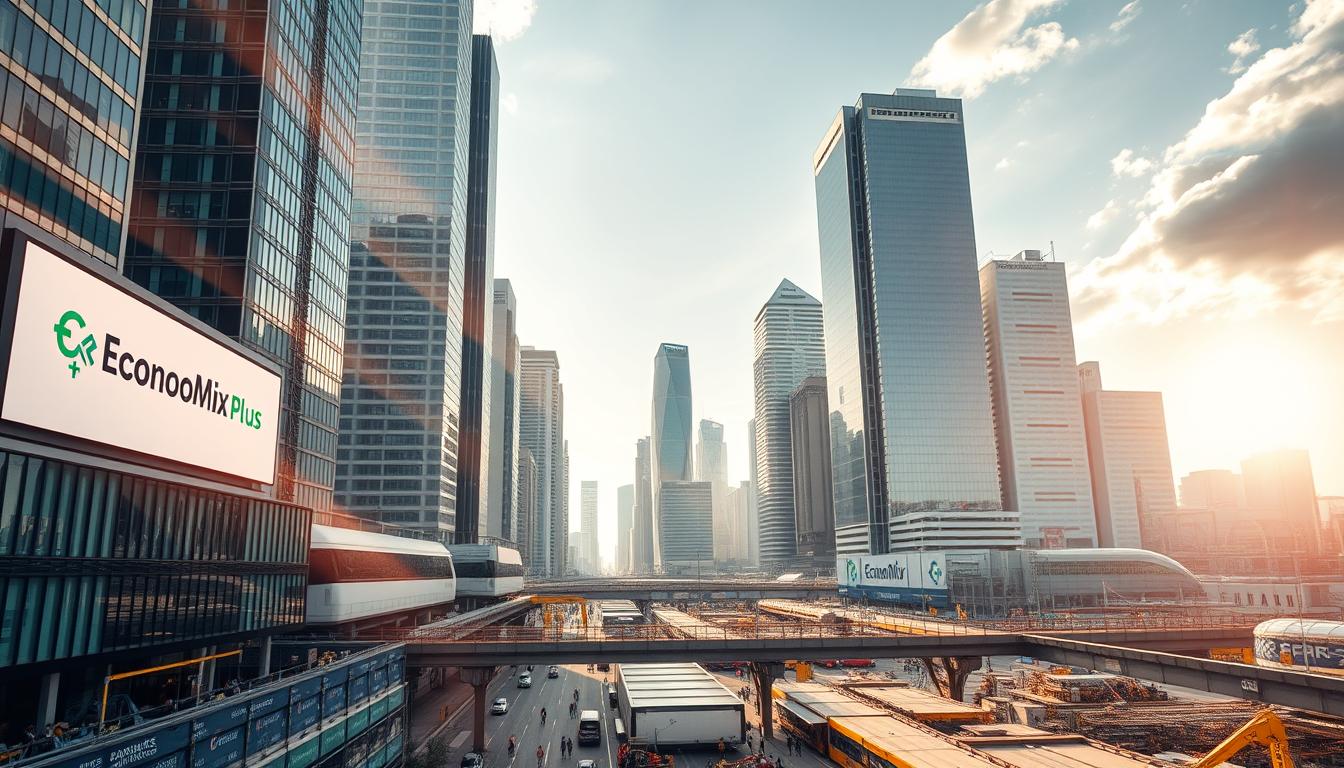
Barriers to Overcoming Dependency on Traditional Models
- Rigid regulatory frameworks discourage private sector participation and limit access to innovative technology. In Egypt, a guide to understanding approval processes for factory licenses reveals they take 87 days—triple Vietnam’s average. Bureaucratic hurdles reduce the value of foreign investments, with 44% of multinationals citing unpredictable policy shifts as their primary concern in this evolving market for new ideas and subscriptions. This news highlights three structural issues that perpetuate stagnation in economic life:Overlapping oversight agencies delaying project timelines
- Subsidized energy pricing distorting production costs
- Legacy labor laws limiting workforce flexibility
The Need for Nuanced and Modern Economic Policies
Transitioning to mixed economic models could unlock $140 billion in untapped service sector potential by 2030. Morocco’s 2022 industrial zones reform demonstrates progress—private property developers now manage 60% of manufacturing hubs, cutting construction timelines by 40%.
| Policy Shift | Impact | Outcome |
|---|---|---|
| Streamlined tax codes | +22% FDI inflows | UAE tech parks expansion |
| Automated customs | -55% import delays | Saudi export growth |
| PPP infrastructure laws | 34% cost reduction | Egyptian rail upgrades |
Accountability mechanisms remain critical. Jordan’s transparent bidding process for public projects increased competition, raising contract value by 18% annually. Such reforms prove that blending state vision with market efficiency drives sustainable growth.
Conclusion
Regional industrial strategies face a critical crossroads. Historical efforts prioritized self-reliance but often overlooked global market realities. Modern success hinges on merging legacy goals with infrastructure upgrades and policy agility.
Asia’s growth demonstrates the power of strategic openness. Foreign partnerships and tech transfers boosted sectors from electronics to renewables, providing a guide for others. For sustained progress in this type of work, a structural shift toward flexible frameworks remains essential—blending state oversight with private sector innovation and access to advanced technology.Investments in logistics networks and digital infrastructure could unlock $90 billion in annual productivity gains by 2030. Simultaneously, nurturing a skilled generation through STEM education aligns workforce capabilities with automation trends.
Regulatory environment reforms prove equally vital. Streamlined licensing and transparent governance attract foreign capital while fostering local entrepreneurship. These steps, combined with renewable energy transitions, position industries for long-term relevance.
The path forward requires abandoning outdated models. By adopting adaptive policies and prioritizing generation-specific solutions, regional economies can transform historical ambitions into sustainable engines for the 21st-century environment.
FAQ
▶
▶
▶
▶
▶
▶
▶
▶
